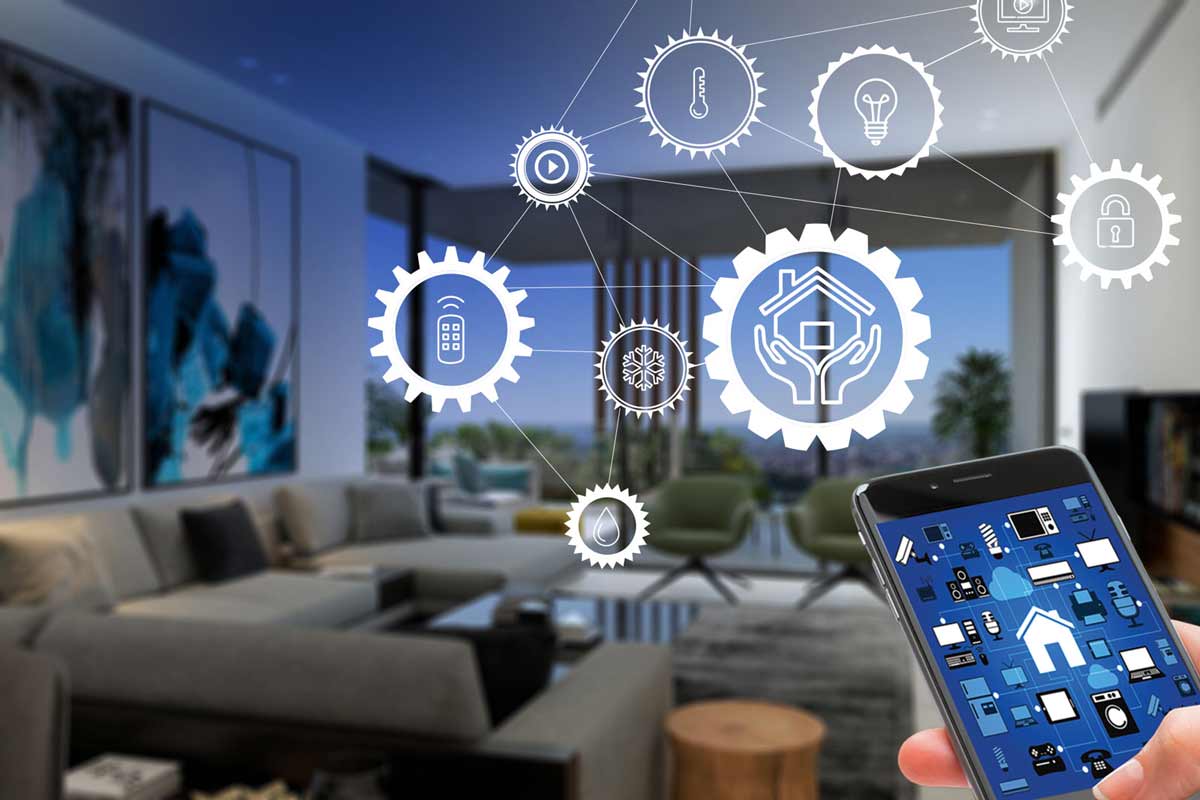Introduction and The Role of IoT in Green Living
Introduction: The Intersection of Smart Homes and Sustainability
In today’s world, environmental concerns have taken center stage, and more homeowners are seeking ways to reduce their carbon footprint while maintaining modern comforts. Enter the Internet of Things (IoT) — a technology revolutionizing how we interact with our homes by making them smarter, more efficient, and eco-friendly. Smart homes equipped with IoT devices are not just about convenience but are crucial players in the global effort to save energy, reduce waste, and foster sustainable living.
This article explores how IoT is transforming traditional homes into eco-friendly smart homes, highlights real-world applications, and shares practical steps you can take to make your home greener with smart technology.
How IoT Empowers Energy Efficiency in Homes
One of the most significant benefits of IoT in eco-friendly homes is energy management. Smart devices allow homeowners to monitor and control energy consumption in real-time, leading to substantial energy savings.
-
Smart Thermostats: Devices like Nest or Ecobee learn your schedule and adjust heating/cooling accordingly, reducing energy waste when you’re not home.
-
Smart Lighting Systems: Using sensors and schedules, smart bulbs can turn off automatically when rooms are unoccupied.
-
Energy Monitoring: Smart plugs and energy meters provide detailed usage stats per appliance, helping identify power-hungry devices.
By optimizing energy consumption, smart homes reduce electricity bills and help lower greenhouse gas emissions from power plants.
IoT and Water Conservation
Water scarcity is another pressing environmental issue, and IoT devices can help save precious water in daily routines:
-
Smart Irrigation Systems: Automatically adjust watering schedules based on weather forecasts and soil moisture levels, preventing overwatering.
-
Leak Detectors: Sensors detect leaks in plumbing systems early, preventing water waste and damage.
-
Smart Faucets and Showers: Control water flow and temperature precisely, minimizing unnecessary water use.
Together, these devices encourage responsible water use, vital for sustainable living.
Waste Reduction Through Smart Technology
IoT-enabled appliances also contribute to reducing waste, both food and household:
-
Smart Refrigerators: Track expiry dates, suggest recipes, and send alerts to minimize food spoilage.
-
Smart Waste Bins: Sensors detect fill levels, optimizing waste pickup schedules and encouraging recycling.
The integration of IoT in waste management is a key step toward reducing landfill contributions and promoting circular living.
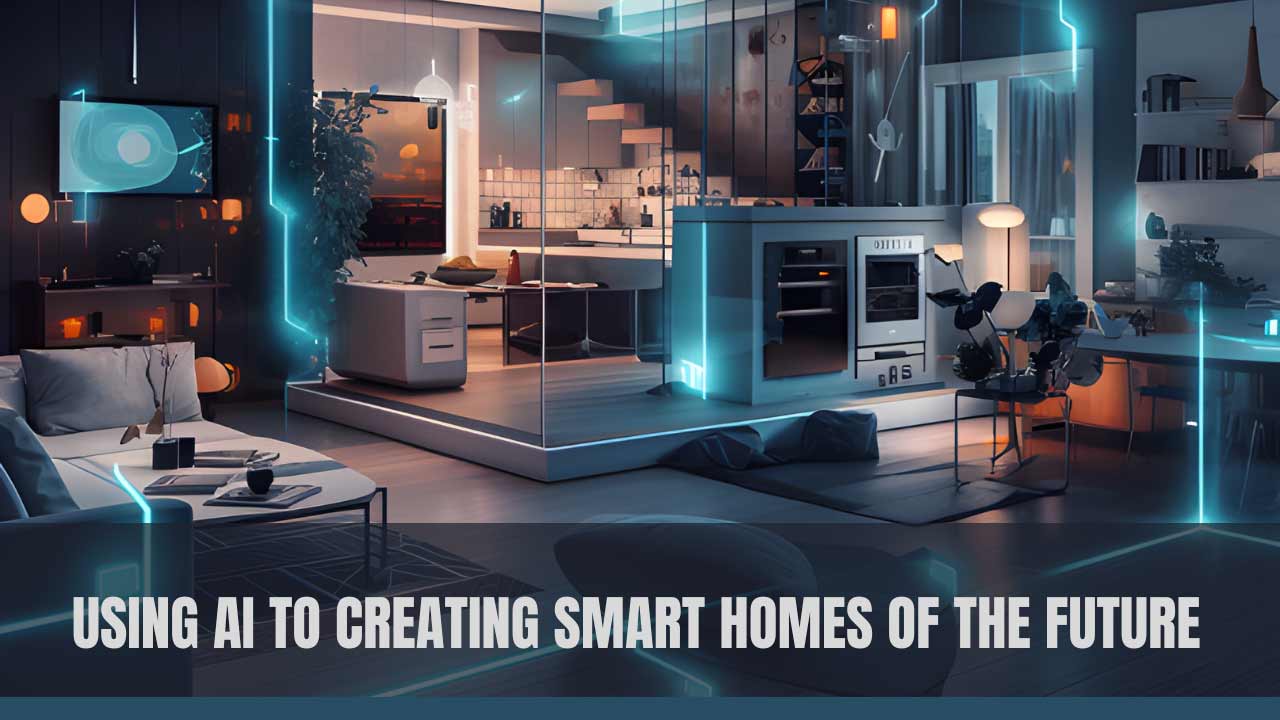
Eco-Friendly Smart Homes: How IoT Helps Save the Planet
Table 1: Energy Savings Potential of Common IoT Devices
| Device Type | Average Energy Savings (%) | Typical Annual Savings (USD) | Environmental Impact Equivalent |
|---|---|---|---|
| Smart Thermostats | 10–15% | $150–$200 | Reduces ~1,000 lbs CO₂ emissions |
| Smart Lighting | 20–30% | $50–$100 | Saves enough electricity to power 5 homes annually |
| Smart Plugs/Energy Monitors | 5–10% | $40–$70 | Avoids ~500 lbs CO₂ emissions |
What to Do Next: Start Small, Think Big
If you’re new to smart homes, begin with simple devices like smart plugs or lighting. Gradually integrate more complex systems like thermostats and irrigation. The key is measuring impact and making adjustments as you go.
Renewable Energy Integration, Sustainable Materials, and Real-World Eco-Smart Homes
Harnessing Renewable Energy with IoT: Solar, Wind, and Beyond
The marriage of IoT technology with renewable energy systems is transforming how homeowners generate, monitor, and optimize clean power use.
-
Smart Solar Panels: IoT-enabled solar arrays provide real-time data on energy production, system health, and weather conditions. Homeowners can track efficiency, predict maintenance needs, and integrate with home energy management systems.
-
Wind Turbines with IoT: For homes with small-scale wind systems, IoT sensors monitor wind speeds and turbine performance to maximize energy output and prevent damage during extreme weather.
-
Energy Storage and Smart Batteries: Smart battery systems paired with IoT devices store excess renewable energy and release it during peak demand, reducing reliance on grid electricity and lowering costs.
By connecting renewable energy sources with IoT, homeowners can significantly increase energy independence and reduce carbon footprints.
Sustainable Building Materials and IoT Sensors
Beyond energy, IoT also supports sustainable construction by monitoring the performance of eco-friendly building materials.
-
Smart Insulation Sensors: These detect heat loss and help maintain optimal indoor temperatures by alerting homeowners when insulation repairs or upgrades are needed.
-
Humidity and Air Quality Sensors: Integrated sensors ensure that materials like bamboo, recycled wood, and low-VOC paints are functioning properly, preserving air quality and reducing mold risks.
-
Structural Health Monitoring: IoT sensors embedded in walls and foundations can detect cracks or moisture intrusion early, preventing costly repairs and material waste.
This real-time feedback loop helps maintain the sustainability of building materials over time.
Case Studies: Real Eco-Friendly Smart Homes in Action
The Green Haven in California
-
Equipped with solar panels, smart thermostats, water-saving irrigation, and energy monitoring.
-
Reduced energy bills by 40% and water use by 30% in the first year.
-
Homeowners use a centralized app to track all metrics and optimize daily routines.
Urban Eco Loft in New York
-
Compact smart lighting and IoT air quality monitors improve indoor environment.
-
Smart appliances reduce food waste and energy use.
-
The IoT-enabled HVAC system adjusts based on occupancy, reducing heating/cooling energy by 25%.
Scandinavian Passive Smart Home
-
Combines passive solar design with smart energy management.
-
Uses IoT-controlled window blinds to optimize sunlight and temperature.
-
Energy-efficient construction plus IoT results in a net-zero energy home.
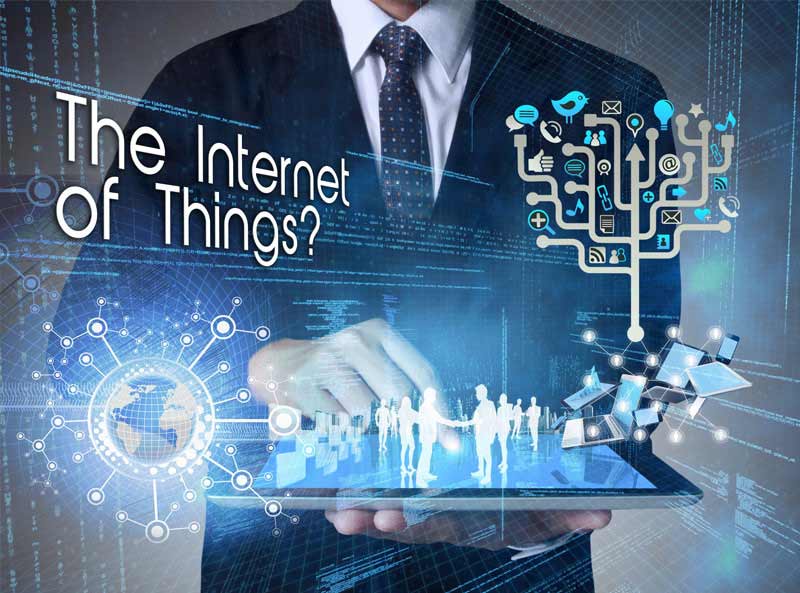
Building a Smarter Life: The Ultimate Guide to IoT Devices for Your Home
Table 2: Costs and ROI of Eco-Friendly IoT Solutions
| IoT Solution | Estimated Installation Cost (USD) | Average Annual Savings (USD) | Payback Period (Years) | Environmental Impact |
|---|---|---|---|---|
| Smart Solar Panels + IoT | $10,000–$25,000 | $1,200–$2,000 | 7–12 | 3–5 tons CO₂ reduction annually |
| Smart Thermostat & HVAC Control | $200–$600 | $150–$300 | 1–2 | ~1,000 lbs CO₂ saved annually |
| Smart Irrigation System | $300–$1,000 | $100–$250 | 2–4 | 10,000+ gallons of water saved/year |
| Smart Lighting Systems | $100–$500 | $50–$120 | 1–3 | Significant electricity savings |
What to Do Next: Assess Your Home’s Renewable Potential
-
Evaluate if solar or wind energy suits your location.
-
Consult with local providers about integrating IoT monitoring.
-
Consider upgrading insulation or building materials with IoT sensors for long-term sustainability.
Waste Management, Indoor Air Quality, and Smart Appliances Driving Green Living
Smart Waste Management: Reducing, Reusing, Recycling with IoT
IoT-powered waste management solutions are revolutionizing how households handle trash and recycling to minimize environmental impact.
-
Smart Trash Bins: Equipped with sensors to monitor fill levels, these bins notify users or waste services when they need emptying, preventing overflow and optimizing collection routes.
-
Recycling Guidance: Apps connected to IoT devices help residents sort waste correctly by providing real-time feedback and reminders, boosting recycling rates.
-
Composting Sensors: IoT sensors track temperature and moisture in compost bins, ensuring efficient decomposition and reducing food waste sent to landfills.
By streamlining waste disposal and recycling, smart homes reduce methane emissions and landfill pressure.
Indoor Air Quality Monitoring: Creating Healthier Eco Homes
Good air quality is essential for both environmental and personal health, and IoT devices make it easier than ever to maintain.
-
Real-Time Air Quality Sensors: Measure pollutants like VOCs, CO₂, humidity, and particulate matter, alerting residents to issues before they become severe.
-
Automated Ventilation Systems: Integrate with sensors to increase fresh air flow or activate air purifiers as needed.
-
Energy-Saving Air Filters: Smart filters monitor usage and lifespan, ensuring they are replaced only when necessary, reducing waste.
Cleaner indoor air contributes to a healthier environment and reduces health-related costs.
Smart Appliances: Efficiency Meets Convenience
The latest generation of IoT-enabled appliances delivers significant eco benefits while adding convenience.
-
Smart Refrigerators: Monitor food inventory, reduce spoilage by managing temperatures, and suggest recipes to minimize waste.
-
Energy-Efficient Dishwashers and Washers: Automatically adjust cycles based on load size and soil level, saving water and electricity.
-
Connected Ovens and Cooktops: Optimize cooking times and temperatures to reduce energy consumption without sacrificing meal quality.
These devices not only cut utility bills but also encourage sustainable habits.
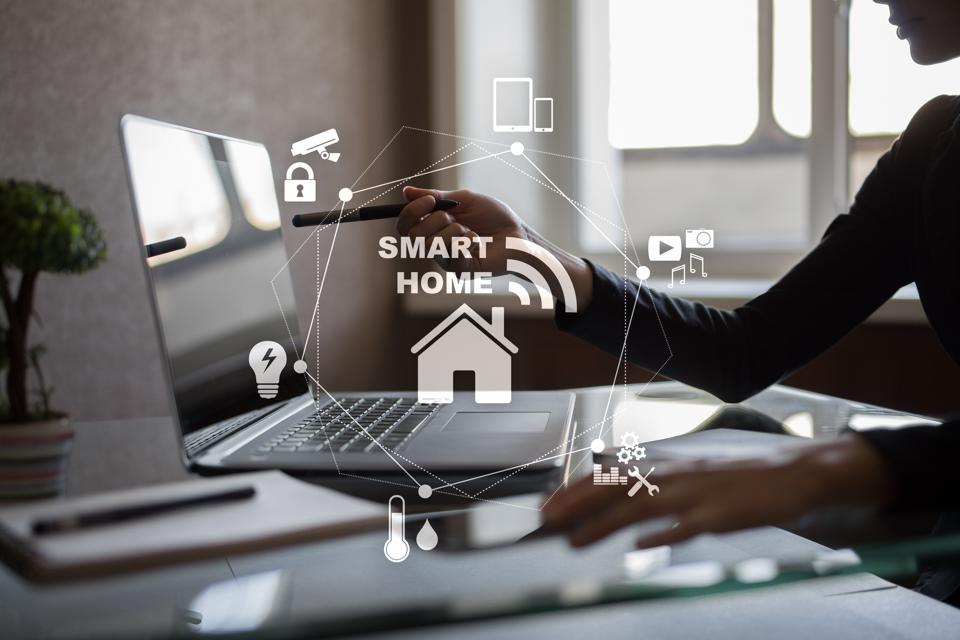
How IoT Devices Work Together: Home Hubs, Networks, and Compatibility
Table 3: Environmental Impact and Costs of IoT Waste and Air Quality Solutions
| IoT Solution | Installation Cost (USD) | Average Annual Savings (USD) | Environmental Benefits | Maintenance Tips |
|---|---|---|---|---|
| Smart Trash/Recycling Bins | $150–$500 | $50–$100 | Reduces landfill waste and CO₂ emissions | Regular sensor calibration |
| Indoor Air Quality Monitors | $100–$300 | Indirect (health cost savings) | Improves health, reduces pollutants | Replace filters as needed |
| Smart Compost Sensors | $50–$200 | Saves on waste disposal fees | Cuts methane emissions, creates fertilizer | Monitor moisture & temperature daily |
| Smart Energy-Efficient Appliances | $500–$2,000 | $150–$400 | Saves water & energy, reduces food waste | Follow manufacturer maintenance |
What to Do Now: Integrate Waste and Air Quality IoT Solutions
-
Start with a smart trash bin or recycling system to improve waste habits.
-
Add air quality sensors in key living areas and bedrooms.
-
Replace old appliances with smart, eco-efficient models during upgrades.
Smart Water Management and Eco-Friendly Landscaping
Smart Water Management: Conserving Every Drop
Water scarcity is a growing global concern, and smart water management technologies in IoT-enabled homes are crucial for sustainable living.
-
Smart Irrigation Systems: Using soil moisture sensors, weather forecasts, and plant water needs, these systems optimize watering schedules, preventing overwatering and runoff.
-
Leak Detection Sensors: Installed near pipes, faucets, and appliances, these sensors alert homeowners instantly to leaks or unusual water usage, preventing waste and costly damage.
-
Smart Water Meters: Track real-time water consumption and provide actionable insights to reduce usage patterns.
By using these IoT tools, homes can reduce water consumption by up to 30%, contributing to conservation efforts and lowering bills.
Eco-Friendly Smart Landscaping: Green Lawns, Less Waste
IoT devices are transforming traditional landscaping into smart, sustainable outdoor environments.
-
Robotic Lawn Mowers: Programmed to cut grass efficiently at optimal times, they reduce fuel use compared to gas-powered mowers and maintain healthy turf.
-
Soil and Weather Sensors: Help in deciding when and how much to water plants or fertilize, cutting down excess chemical and water use.
-
Automated Outdoor Lighting: Solar-powered and motion-activated lights reduce energy consumption while enhancing safety.
Smart landscaping not only improves curb appeal but also conserves natural resources and reduces environmental footprint.
Table 4: Costs and Benefits of Smart Water and Landscaping Systems
| IoT Solution | Installation Cost (USD) | Average Annual Savings (USD) | Environmental Benefits | Maintenance Tips |
|---|---|---|---|---|
| Smart Irrigation Systems | $200–$1,000 | $100–$250 | Saves water, prevents runoff, promotes healthy soil | Seasonal calibration and cleaning |
| Leak Detection Sensors | $50–$300 | $150–$400 | Prevents water waste and damage | Check sensor batteries regularly |
| Robotic Lawn Mowers | $600–$2,000 | $150–$350 | Reduces fossil fuel use, maintains lawn health | Clean blades and charge battery |
| Automated Outdoor Lighting | $100–$400 | $50–$150 | Cuts energy use, promotes renewable solar energy | Clean solar panels and sensors |
What to Do Now: Make Your Outdoor Space Smarter and Greener
-
Install a smart irrigation system to manage water use based on weather and soil conditions.
-
Place leak sensors in vulnerable water areas inside the home.
-
Consider robotic lawn mowers and solar outdoor lighting for efficient, eco-friendly landscaping.
Smart Energy Generation, Storage, and Community Sharing
Harnessing Renewable Energy with IoT
Smart homes are not just energy consumers but can become energy producers with IoT-powered renewable systems like solar panels and wind turbines.
-
Smart Solar Panels: Equipped with IoT sensors, these panels optimize sunlight capture by adjusting angles or tracking shading issues. Real-time performance monitoring ensures maximum efficiency.
-
Home Wind Turbines: Though less common in urban settings, smart wind turbines integrated with IoT provide an additional green energy source, managed remotely.
-
Smart Inverters and Controllers: Convert and regulate energy flow between generation, storage, and consumption devices, all coordinated via IoT.
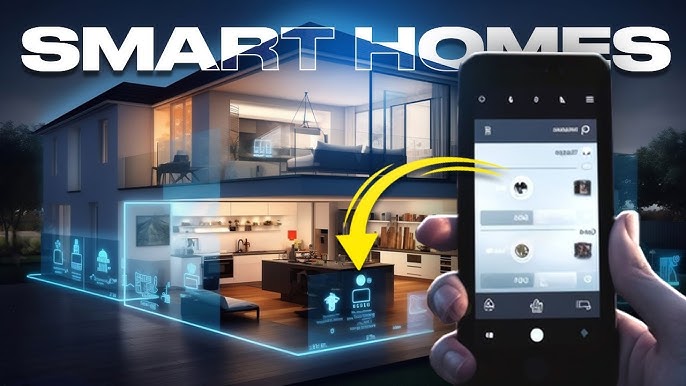
Why IoT Devices Are the Future of Home Design and Comfort
Efficient Energy Storage with Smart Batteries
-
IoT-Enabled Battery Systems: These monitor energy charge/discharge cycles, predict usage patterns, and optimize storage, reducing dependency on grid power during peak hours.
-
Integration with Electric Vehicles (EVs): Smart EV chargers communicate with home energy systems to charge during off-peak times or supply energy back to the home grid (vehicle-to-home technology).
Community Energy Sharing: The New Frontier
-
Peer-to-Peer Energy Trading: IoT platforms enable neighbors to share or trade excess renewable energy using blockchain technology, fostering community sustainability.
-
Smart Grid Participation: IoT allows homes to interact with smart grids, adjusting consumption dynamically based on grid load and energy prices, further reducing carbon footprint.
Table 5: Costs and Savings of IoT-Powered Energy Systems
| IoT Energy System | Installation Cost (USD) | Annual Energy Savings (USD) | Environmental Impact | Maintenance Recommendations |
|---|---|---|---|---|
| Smart Solar Panels | $5,000–$15,000 | $500–$1,500 | Reduces fossil fuel use, lowers carbon footprint | Regular cleaning, software updates |
| IoT-Enabled Battery Storage | $3,000–$10,000 | $300–$900 | Enables energy use optimization, reduces grid reliance | Battery health monitoring, firmware updates |
| Smart EV Chargers | $500–$2,000 | $100–$400 | Promotes clean transportation energy | Inspect connectors, software updates |
| Peer-to-Peer Energy Trading | Varies | Varies | Supports community renewable energy sharing | Ensure IoT platform security |
What to Do Now: Future-Proof Your Home Energy System
-
Invest in IoT-integrated solar panels and battery storage to maximize renewable energy use.
-
Explore smart EV charging stations compatible with your home energy system.
-
Participate in local energy-sharing programs to contribute to and benefit from community sustainability.
Summary and Next Steps
By adopting IoT in energy generation, storage, and community sharing, homeowners can significantly reduce their environmental footprint, save money, and contribute to a greener future. The smart eco-home of tomorrow is interactive, efficient, and community-oriented.
Frequently Asked Questions (FAQ)
What are the key benefits of IoT in eco-friendly smart homes?
IoT helps optimize energy use, monitor resource consumption, automate efficient behaviors, integrate renewable energy systems, and enable community energy sharing, all reducing environmental impact and saving costs.
Where can I start implementing IoT for a greener home?
Begin with smart thermostats, lighting, and energy monitors. Then consider smart solar panels, battery storage, and EV chargers for renewable energy integration.
Who can install and maintain these IoT energy systems?
Certified professionals in solar and smart home technologies should handle installation. For maintenance, many systems offer remote diagnostics and updates via IoT platforms, but periodic professional checks are recommended.
When is the best time to upgrade my home with smart energy devices?
Upgrades are ideal when renovating or when your current systems reach end-of-life. Incentives and rebates for renewable energy technologies often vary by region and time, so stay informed.
How much can I realistically save by switching to IoT-enabled eco-friendly smart home technologies?
Savings depend on your energy use, local energy costs, and available renewable resources but can range from hundreds to thousands of dollars annually.
Conclusion
IoT technology is transforming homes into sustainable, energy-efficient ecosystems. From intelligent lighting and climate control to renewable energy generation and community sharing, smart homes empowered by IoT not only reduce environmental footprints but also create healthier, more cost-effective living spaces.
By embracing IoT-driven eco-friendly solutions, homeowners actively contribute to combating climate change, lowering utility bills, and increasing property values.
What to Do Next: Your Green Smart Home Roadmap
-
Assess Your Current Energy Usage: Use smart energy monitors to identify waste.
-
Install Smart Automation: Implement smart thermostats, lighting, and water systems.
-
Integrate Renewables: Add IoT-enabled solar panels and battery storage.
-
Adopt Smart EV Charging: Prepare for future transportation needs.
-
Join Energy-Sharing Networks: Connect with community initiatives.
-
Stay Updated: Regularly update IoT software and firmware for efficiency and security.


